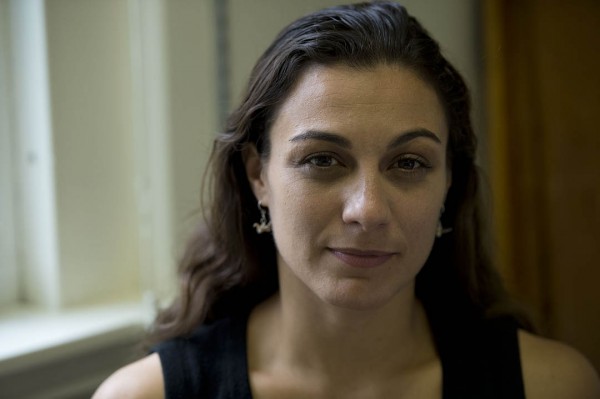Rachel Boggia, assistant professor of dance
Majoring in neurobiology and behavior at Cornell, Rachel Boggia studied dance all the while. It was there that she discovered the power of technology in dance when her teacher Byron Suber put her in “smart shoes” that enabled her to create her own sound score.
Appointed assistant professor of dance at Bates in 2012 after two years as a visiting faculty member, Boggia continues to employ sophisticated technology in her art and teaching. A videographer with ample documentary experience, she often blends video, both prerecorded and live, into performances.
She also uses interactive devices such as smartphones to shape the performance space from the inside. “These inputs can be used in concert with computers to generate sound, color, video and so forth,” she explains.
“It’s important for our art to reflect this huge digital revolution,” Boggia says. But not just for its aesthetic potential. The digital explosion in mass media, she points out, has exacerbated cultural attitudes about the body that don’t do dancers any good.
Society conditions us to “erase the body,” she explains. “You know, we think the body just carries the brain around. Or we commodify it — ‘I have to be in shape, my body has to be young and beautiful.’
“Dancers spend a lot of time developing consciousness of the relationship between their physical and mental experiences,” she explains. Because of this awareness, “I’m necessarily bringing a unique perspective to technology, and I want my students to have that, too. My teaching raises opportunities for more mindful connections between people and more mindful use of the tools.”
Boggia served as acting director of the Bates dance program in 2010-11 after teaching at Wesleyan University and at Connecticut and Dickinson colleges. She earned her MFA in dance from The Ohio State University in 2003. And she did follow through with neurobiology, receiving a bachelor of science degree at Cornell in 2000.
